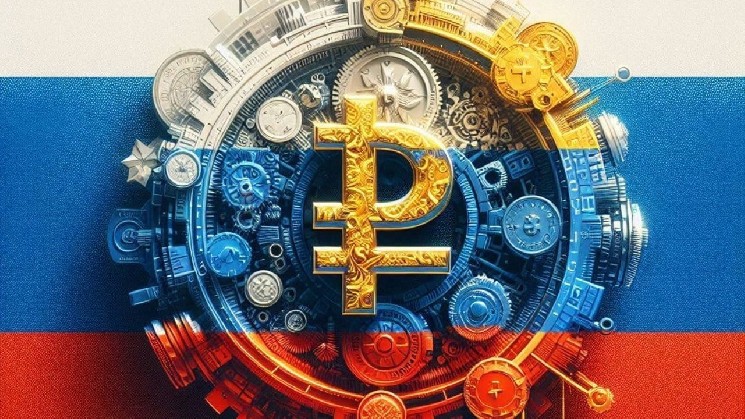Bank of Russia Claims Digital Ruble Issuance Won’t Cause Inflation

The Bank of Russia has explained that the launch of the digital ruble, the Russian CBDC, will not affect the state’s mechanisms to control inflation or the amount of money issued. The institution clarified that the new currency does not pose risks to the country’s financial stability, and will not change the functions of the banking system.
Bank of Russia: Digital Ruble Not a Risk for the Country’s Financial Stability
The Bank of Russia recently explained that the digital ruble, Russia’s central bank digital currency (CBDC), will not change how the state manages its monetary policy. In a draft outlining the direction of the central bank’s policies for 2025-2027, the bank indicated that it would continue to target inflation with the same tools even after the digital ruble launch.
In the document, the bank stated:
The emergence of a digital form of the national currency will not affect the mechanisms for implementing monetary policy. The Bank of Russia will continue to manage money market rates by conducting operations for providing liquidity to banks and absorbing it.
Russia’s CBDC is a retail currency, meaning that users can make payments using it directly, like with the Chinese digital yuan. This is different from the CBDCs that some countries are researching, which focus on easing the transactions between financial institutions of the money network.
Analysts are worried about the digital ruble and its possible effects on the Russian economy. Nonetheless, the bank assessed that it would not have an inflationary effect and would only increase the demand for cash and funds in bank accounts, but not money issuance.
The bank also declared that the current system with its two-tier structure will be preserved, and credit institutions will remain functioning lenders, offering custody for the people’s savings. These will have to support the digital ruble, giving customers tools to open accounts and make transactions using it.
Finally, the bank reinforced the digital ruble’s advantages, detailing it would offer an alternative to traditional payments and monetary systems. Bank authorities expect a widespread digital ruble adoption by 2025.




 Bitcoin
Bitcoin  Ethereum
Ethereum  Tether
Tether  Dogecoin
Dogecoin  USDC
USDC  Cardano
Cardano  TRON
TRON  Chainlink
Chainlink  Stellar
Stellar  Hedera
Hedera  Bitcoin Cash
Bitcoin Cash  LEO Token
LEO Token  Litecoin
Litecoin  Cronos
Cronos  Ethereum Classic
Ethereum Classic  Monero
Monero  Dai
Dai  OKB
OKB  Algorand
Algorand  Cosmos Hub
Cosmos Hub  Stacks
Stacks  Theta Network
Theta Network  Gate
Gate  Maker
Maker  KuCoin
KuCoin  Tezos
Tezos  IOTA
IOTA  NEO
NEO  Polygon
Polygon  Zcash
Zcash  Synthetix Network
Synthetix Network  Tether Gold
Tether Gold  TrueUSD
TrueUSD  Dash
Dash  Holo
Holo  Zilliqa
Zilliqa  Enjin Coin
Enjin Coin  0x Protocol
0x Protocol  Qtum
Qtum  Siacoin
Siacoin  Basic Attention
Basic Attention  Ravencoin
Ravencoin  Bitcoin Gold
Bitcoin Gold  Decred
Decred  NEM
NEM  Ontology
Ontology  DigiByte
DigiByte  Hive
Hive  Nano
Nano  Status
Status  Huobi
Huobi  Lisk
Lisk  Waves
Waves  Numeraire
Numeraire  Pax Dollar
Pax Dollar  Steem
Steem  BUSD
BUSD  OMG Network
OMG Network  Ren
Ren  Bitcoin Diamond
Bitcoin Diamond  Bytom
Bytom